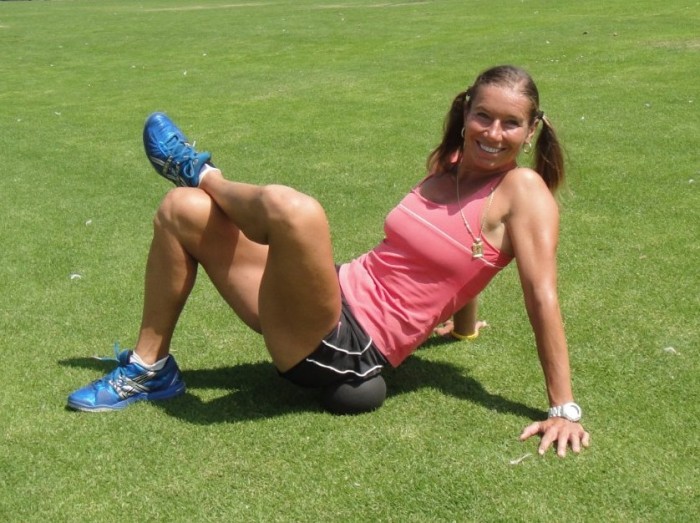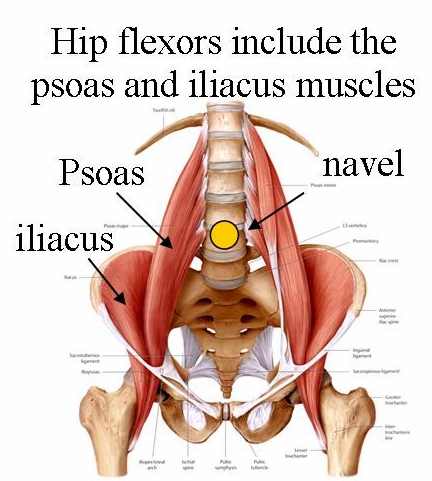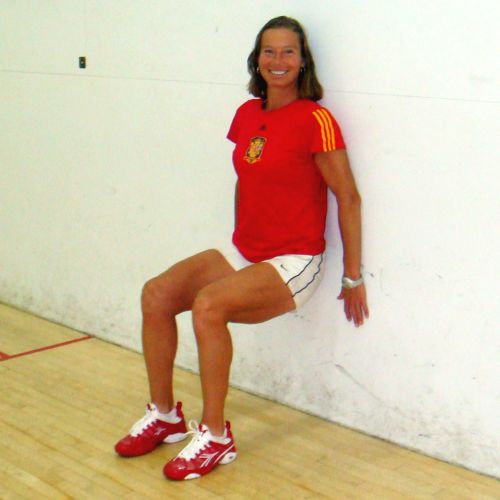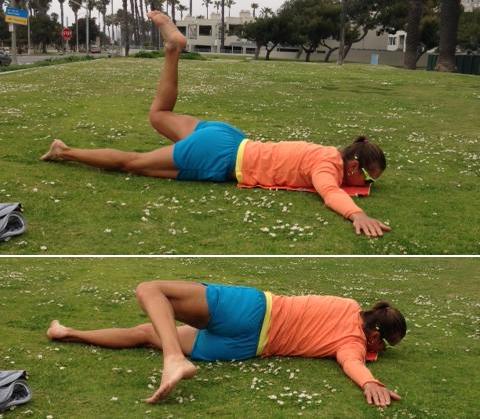Pain in the butt can be a real pain the butt.
Literally. Or idiomatically.
Tennis players, runners, ball players, or even when walking or standing a lot, you have probably experienced this discomfort that just stays with you and doesn’t want to go away whatever you do.
Sometimes you can have a numb, tingling, or burning sensation going down the entire leg toward the calf and sole of your foot. The glutes feel painful on touch. The pain can come and go unpredictably, and performing athletic activity or playing tennis becomes almost impossible. It’s hard to relax because the pain makes itself reminded in everything you do.
Sometimes this is falsely mistaken for sciatica nerve problem. Most often is this problem called “piriformis syndrome”. The piriformis is a tiny muscle that originates on the sacrum and attaches on the femur. It accelerates hip external rotation, extension and abductions, which are the movements that you perform on the tennis court endlessly.
This problem is often caused by too much siting and inactive and weak glutes. The piriformis has to assist in the movements that the glutes should be doing and becomes overused and overactive. When we address this issue, your pain in the butt will go “magically” away. And the solution is not that difficult either.
Tight Piriformis
Piriformis is the largest of the six muscles in the hip that are responsible for external rotation of the leg. If you have your leg planted, the piriformis turns the body in the opposite direction, a movement that tennis players do repeatedly thousands of times. An overused and tight piriformis muscle causes a lot of misery and pain in your sacrum, glutes and hips. It will twist your sacrum a little bit, causing a short-leg syndrome that adds to the problem. It can also compress the sciatic nerve and as a result, it mimics the signs and symptoms of the “sciatica” pain.
The “pain in the butt” shows often as pain while sitting, standing, hip flexion, adduction, and internal rotation.
Underdeveloped Glutes
Quick directional changes in tennis impose a high risk on your piriformis’ well-being, especially if you are not well conditioned. Therefore, it is important to work on strengthening your glutes and hips, accompanied by regular stretching. Prolonged inactivity or sitting puts the piriformis muscles in trouble. If you sit at work or school most of your day and then start sprinting around the tennis courts, you may be creating future problems.
Include your glute strengthening into your regimen regularly, several times per week. There are no glutes that are too strong. Regularly perform:
- squats, with different stances (narrow, medium, and wide)
- lunges (walking, stepping forward, stepping backward), with dumbbells, kettlebells or free-bar
- glute bridges, free or with added weight, two-legged or one-legged
- deadlifts (classic or stiff-legged)
- monster walks (and other rubber band exercises for gluteus medius)
- butt-blaster kicks (hip extension) with weights, machines, cables or rubber bands
Pain in the Butt Trigger Points
An overused, shortened and sometimes even inflamed piriformis muscle contains painful trigger points. To remain pain-free, you need to stretch the piriformis to its original length and eliminate the trigger points with myofascial release.

- Sit down on the floor, bend your legs and place your left foot on the top of your right knee.
- Place a foam ball under your left glute and tilt a little bit to the left, toward the outside.
- Roll around slowly until you find a surprisingly tender trigger point. Stay on it and wiggle around a little bit while breathing deeply, until the pain goes away.
- Keep rolling the entire area to find and eliminate all the trigger points.
- A regular myofascial release will be less painful over time and your “sciatica” problems will be gone almost immediately.
- For more intense sensation or to reach the deepest, stubborn trigger points, use a tennis or lacrosse ball.
Keeping your piriformis healthy and free of trigger points, you will be able to train harder, more often and without pain, and as a result, your tennis game will improve steadily.
Find more simple tennis specific fitness and injury prevention exercises in “Tennis Fitness for the Love of it” book on Amazon.com. Educate yourself, learn your body, and get super fit and healthy. Be awesome and thrive.




